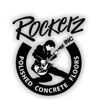Mold and mildew are quite common even if deserts – there are more than 75 species capable of withstanding the heat and lack of water, so it’s no surprise that there are species which are perfectly adapted for basement dwelling. Unfortunately, basement mold is quite a common problem especially in more humid environments, today we’ll discuss how to deal with it for good.
Fool proof ways of removing mold from your basement
The reason why basement mold is so prevalent in a lot of households is due to moisture. Basements are more prone to moisture due to the lack of sun exposure, the lower temperature of the space and an increase in subterranean water in general.
Depending on the construction of the property and the amount of hydro insulation around the foundation, drainage and landscape inclination, you might have a wetter basement than others. And since mold loves damp and dark places, it more likely to grown in the corner of a basement rather than a kitchen or an attic space.
How to deal with moisture in your basement
One way of dealing with moisture is to use a dehumidifier. On fact most dehumidifiers have been designed to work optimally in basement environments, working most optimally in the lowered temperature of a basement rather than any other room in your property.
This is due to the excessive amounts of moisture, humidity and lower temperature. Dehumidifiers can be a great solution, though they lack something big – moisture prevention. Using a dehumidifier is basically treating the symptoms rather than the cause, so they should be reserved as a supplement to the treatment, rather than the base.
You focus should be towards dealing with the source of said moisture rather than constantly extracting it over and over again.
Be mindful of landscape inclination, watering of gardens and plants
One thing some landscapers and home owners miss, is the importance of the angle of a lawn or a landscaped part of the property. Since water is looking for the lowest spot, drawn by gravity, it will pool in the lowest places available – the path of least resistance and what not.
One big source of moisture around your property is the irrigation of your lawn or plants around the base of the property. Check to see if the inclination is leaning towards the property as opposed to away from it as it should be.
Remove any rose bushes, foliage, trees and flowers and move them away from the base of the house, their irrigation will increase the overall moisture contents of the soil around the house. And since concrete actually draws water towards it, this may cause condensation around the foundation of the house, and becoming a major moisture issue in your basement.
Seal any holes or cracked concrete blocks
Sealing cracks and holes in concrete blocks around the base of the house is a good solution to dealing with moisture. These places are huge sponges which allow moisture from freely moving into the inside of the property – use caulk, preferably any-fungal caulk which will discourage the growth of mold. You can call to a professional company for mold removal to check your home. Companies like GCDrestoration.com are on the market in USA every day and wait for your call.
You can also use cement and mix it will anti-fungal caulk to create an elastic adhesive which you can place around the foundation of the house. It has great coverage and will not shrink after drying, allowing you to actually draw out the moisture using a dehumidifier.
Be mindful of tree roots
Trees like walnut are actually pretty bad for the foundation of the house. If you have any trees in close proximity to the property, you need to either remove or move them. Walnut trees, especially brown and black species, are notorious for their deep, water retentive roots, which can be a great source of nuts, but a very big contributor to water damage and mold and mildew growth in your basement.






























